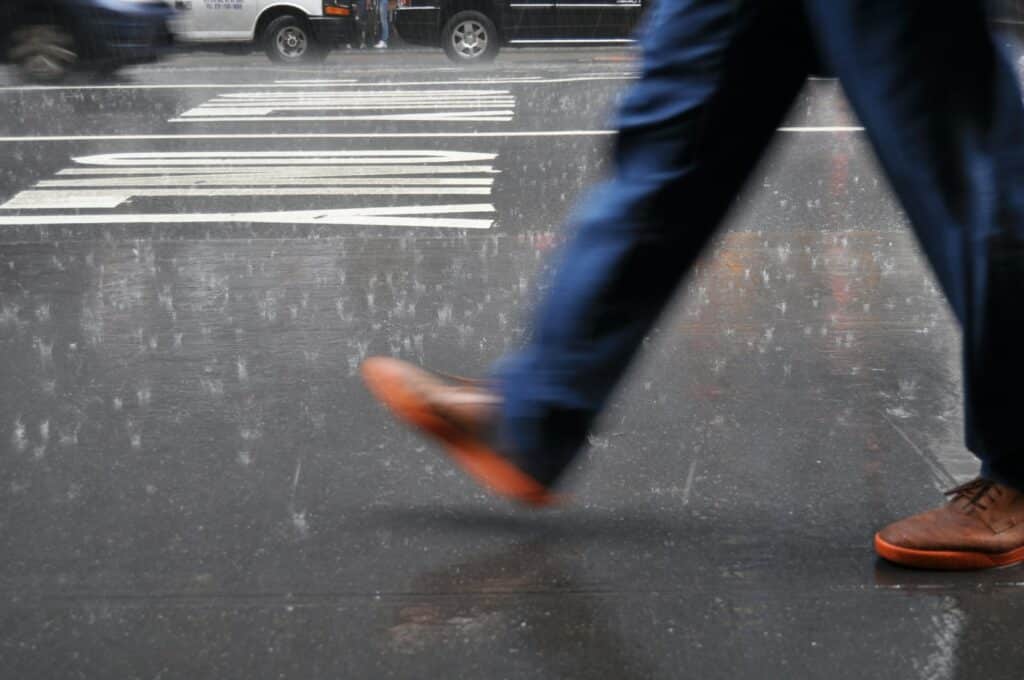As someone who commutes daily, I know firsthand how much the weather can impact my daily routine. Whether it’s a sudden thunderstorm or a snowstorm causing traffic delays, it’s important to be prepared for any weather conditions that may arise during your commute.
Table of Contents
Understanding Commute Weather
When it comes to commuting, weather can be a major factor that affects how we get to work and how long it takes us to get there. Whether it’s rain, snow, or extreme heat, weather conditions can cause delays, accidents, and even road closures. In this section, I will provide some insights into how weather affects our commute and what we can do to prepare for it.

Weather Conditions and Their Impact on Commute
Different weather conditions can have different impacts on our commute. For example, heavy rain can cause flooding, road closures, and accidents, which can lead to delays and longer travel times. On the other hand, extreme heat can cause traffic congestion and air pollution, which can also affect our commute.
To better understand how weather conditions impact our commute, it’s important to consider the following factors:
- Type of transportation: Different modes of transportation, such as driving, cycling, or taking public transit, can be affected differently by weather conditions. Thunderstorms might delay buses, snow can hinder driving, and rain can make cycling risky.
- Distance and route: The length of our commute and the route we take can also impact how we are affected by weather conditions.
- Time of day: Weather conditions can also have a greater impact during certain times of the day, such as rush hour.
Preparing for Commute Weather
To prepare for commute weather, it’s important to stay informed about weather conditions and how they might affect our commute. Here are some tips to help you prepare:
- Check the weather forecast: Before heading out, check the weather forecast to see if there are any weather alerts or warnings in your area.
- Plan your route: Plan your route in advance and consider alternative routes in case of road closures or traffic congestion.
- Allow extra time: Allow extra time for your commute in case of delays or longer travel times.
- Dress appropriately: Dress for the weather conditions and consider bringing extra clothes or gear, such as rain gear or warm clothing.
- Stay informed: Stay informed about weather conditions and any updates or changes that might affect your commute.
Impact of Weather on Daily Commute
As someone who has been commuting for years, I know firsthand how much weather can impact our daily commute. In this section, I will discuss the impact of weather on daily commute, with a focus on traffic and public transportation.

Weather and Traffic
Bad weather can make traffic even worse, causing delays and frustration for drivers. Rain, snow, and ice can make roads slippery and reduce visibility, leading to accidents and traffic jams. On the other hand, extreme heat can cause tire blowouts and engine overheating, leading to breakdowns and delays.
The study from M. Sabir et al has shown that adverse weather conditions can have a significant impact on commuting speed, leading to a decrease in welfare. This highlights the need for individuals to plan their commutes accordingly and take necessary precautions during adverse weather conditions.
To avoid these issues, it’s important to be prepared for bad weather. This can include checking the weather forecast before leaving, allowing extra time for your commute, and driving more slowly and cautiously in bad weather conditions. Additionally, having a well-maintained vehicle with good tires and brakes can help reduce the risk of accidents and breakdowns.
Weather and Public Transportation
Weather can also impact public transportation, causing delays and disruptions in service. Heavy rain or snow can cause train tracks to flood or become blocked, leading to cancellations or delays. Extreme heat can also cause issues, such as power outages or equipment malfunctions.
To minimize the impact of bad weather on public transportation, it’s important to stay informed about service disruptions and delays. This can include checking the transit agency’s website or social media accounts for updates, signing up for alerts, and planning alternative routes or modes of transportation when necessary.
Weather Forecasting and Commuting
As someone who commutes every day, I know how important it is to have accurate weather forecasting information. Knowing what the weather will be like can help me plan my route, choose the right mode of transportation, and even decide what to wear. In this section, I will discuss the importance of accurate weather forecasting and how technology can help us stay up-to-date with the latest weather updates.

Importance of Accurate Forecasting
Accurate weather forecasting is essential for commuters. It can help us plan our route and avoid traffic delays caused by bad weather conditions. For example, if there is a snowstorm forecasted, I can choose to work from home or take public transportation instead of driving. This can save me time and reduce the risk of accidents.
In addition to saving time and reducing risks, accurate weather forecasting can also help us save money. If we know that there will be heavy rain, we can choose to wear rain gear instead of buying an expensive umbrella or raincoat at the last minute. Accurate weather forecasting can also help us save money on transportation costs by choosing the most efficient mode of transportation based on weather conditions.
Using Technology for Weather Updates
Technology has made it easier than ever to stay up-to-date with the latest weather updates. There are many weather apps available that can provide real-time weather information. These apps can help us plan our commute based on current weather conditions, such as traffic delays, road closures, and accidents.
Weather apps can also provide us with alerts and notifications about severe weather conditions. For example, if there is a tornado warning in my area, I will receive an alert on my phone. This can help me take immediate action to protect myself and my family.
In addition to weather apps, many cars now come equipped with weather forecasting technology. This technology can provide real-time weather updates and alerts while we are driving. This can help us make informed decisions about our route and mode of transportation.
Adapting to Weather Changes
As a commuter, it’s important to be prepared for changes in weather that could impact your daily commute. Here are some tips for adapting to weather changes:
Seasonal Commute Changes
Different seasons bring different weather patterns, and it’s important to be prepared for them. Here are some tips for adapting to seasonal changes in weather:
- Winter: In colder months, it’s important to prepare for snow and ice. Make sure your car has good tires and that you have an ice scraper and snow brush in your car. If you take public transportation, check for delays or cancellations due to inclement weather.
- Spring: Spring weather can be unpredictable, so it’s a good idea to be prepared for rain and thunderstorms. Bring an umbrella or rain jacket with you, and be aware of potential flooding in your area.
- Summer: In the summer, it’s important to stay cool and hydrated. If you walk or bike to work, try to do so during cooler parts of the day and wear light-colored, breathable clothing. If you drive, make sure your car’s air conditioning is working properly.
- Fall: Fall weather can be unpredictable, so it’s a good idea to be prepared for rain and wind. Bring an umbrella or rain jacket with you, and be aware of potential flooding in your area.
Emergency Weather Situations
Sometimes, weather changes can be severe and require emergency action. Here are some tips for adapting to emergency weather situations:
- Thunderstorms: If you hear thunder or see lightning, seek shelter immediately. Avoid standing under trees or other tall objects, as they can attract lightning. If you’re driving, pull over to a safe location and wait for the storm to pass.
- Tornadoes: If a tornado warning is issued, seek shelter immediately in a basement or interior room on the lowest level of a sturdy building. If you’re driving, abandon your car and seek shelter in a ditch or low-lying area.
- Floods: If flooding is imminent, evacuate to higher ground immediately. Avoid walking or driving through floodwaters, as they can be deeper than they appear and contain dangerous debris.
- Extreme Heat: In extreme heat, it’s important to stay cool and hydrated. Stay indoors as much as possible, and avoid strenuous activity during the hottest parts of the day. If you must be outside, wear light-colored, breathable clothing and drink plenty of water.
Conclusion
In conclusion, it is evident that weather conditions play a significant role in our daily commutes. From heavy rain to snowstorms, extreme weather can cause delays, cancellations, and even accidents.
Overall, it is important to be aware of the impact of weather conditions on our daily commutes and take necessary measures to ensure safe and efficient travel.
FAQ
Is there an app that shows weather along a travel route?
Yes, there are several apps designed to show weather conditions along a travel route. One popular app is “Weather on the Way,” which gives hourly forecasts for your journey.
Can Google Maps show weather along route?
Google Maps does not provide weather forecasts along routes directly within the app. However, you can overlay weather information on Google Maps using third-party websites or apps. It’s always a good idea to check the latest version of Google Maps for any new features or integrations.
What is the best weather site for travel?
The “best” site can be subjective and depends on personal preferences. Some popular and reliable options include:
Weather.com (The Weather Channel): Offers detailed forecasts and radar images.
AccuWeather: Known for its minute-by-minute precipitation forecasts.
Weather Underground: Features user-contributed data for hyper-local insights.
How do you track weather?
Tracking weather can be done in several ways:
Weather Apps: Many mobile apps provide real-time weather updates, including Weather.com, AccuWeather, and the NOAA Weather App.
Websites: Sites like those mentioned above can be accessed via browsers.
Local News: Many local TV and radio stations provide regular weather updates.
Weather Radios: These are designed to provide alerts, especially during severe weather conditions.







